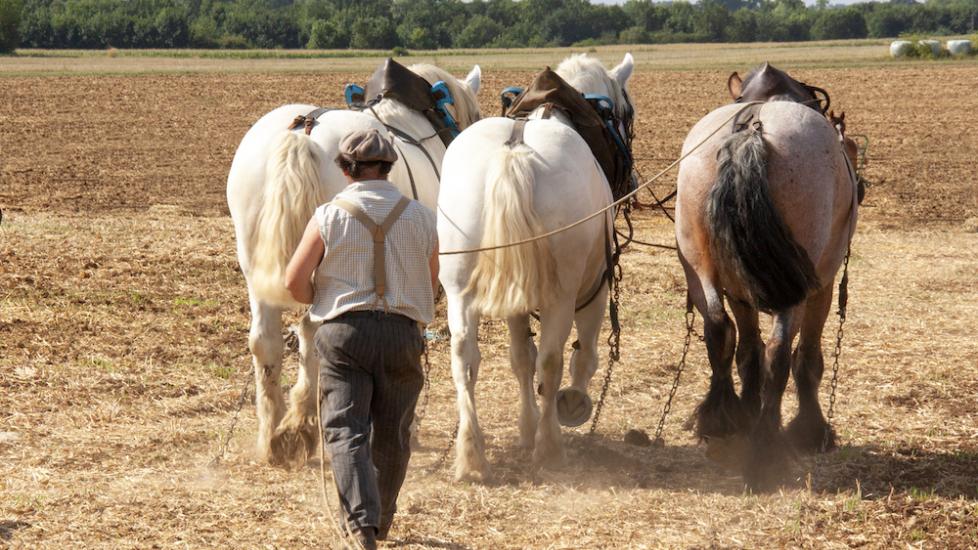Auxois
The Auxois is a strong horse breed with well-formed muscles and a massive body. Its physical attributes make it ideal for farm and heavy draft work. Unfortunately, it has become one of the rarest French draft breeds in the world.
Physical Characteristics
Standing at about 15.2–17 hands high and up to 2,200 pounds, the Auxois is larger than its relative, the Ardennais. Despite its massive body, the Auxois is quite agile, drawing its strength from its muscular neck, prominent withers, wide chest, and brawny croup and forearms. Because of its dense bones and strong knees, the Auxois is also ideal for heavy labor and work detail. Most Auxois horses are bay, black, or roan in color, although chestnut or gray horses are sometimes seen.
Personality and Temperament
Don't let its intimidating size fool you—the Auxois has a calm, gentle temperament. It is a hard-working, reliable horse that is well-suited for anything from plowing and hauling to therapy programs and recreational riding.
History and Background
A close relative to the Ardennais horse breed, the Auxois developed through crossbreeding with Bourguignons. However, the Auxois stock was enhanced in the 19th century by introducing Northern Ardennais, Boulonnais, and Percheron blood. The Auxois originates from France but was used in Belgium and Sweden when these countries bred their own distinctive stock. The official Auxois Stud Book was developed in 1913 to record bloodlines.
Although the Auxois has had a stud book since 1913, it is now considered a rare breed due to the large decline in numbers as machines made an impact in the farming world. A breeding program was established in the 1950s to preserve the breed; numbers have been steady since then. Today it is still used for heavy draft and farm work.
Health and Care
Although the Auxois breed is generally hardy, it is prone to certain health issues including arthritis, laminitis, and respiratory issues including allergies and heaves.
Proper care and management are essential for keeping this horse healthy and strong. This includes providing a balanced diet, regular exercise, and routine veterinary care.
Featured Image: iStock.com/guy-ozenne
